Let’s be real: kids’ rooms are where chaos and creativity collide. You want it cute, they want it cool, and the mess wants to win. Good news—these 9 kids room design ideas deliver style, storage, and sanity without a remodel. Ready to create a space your kid actually uses and you actually love?
1. Build a Bed That Does More
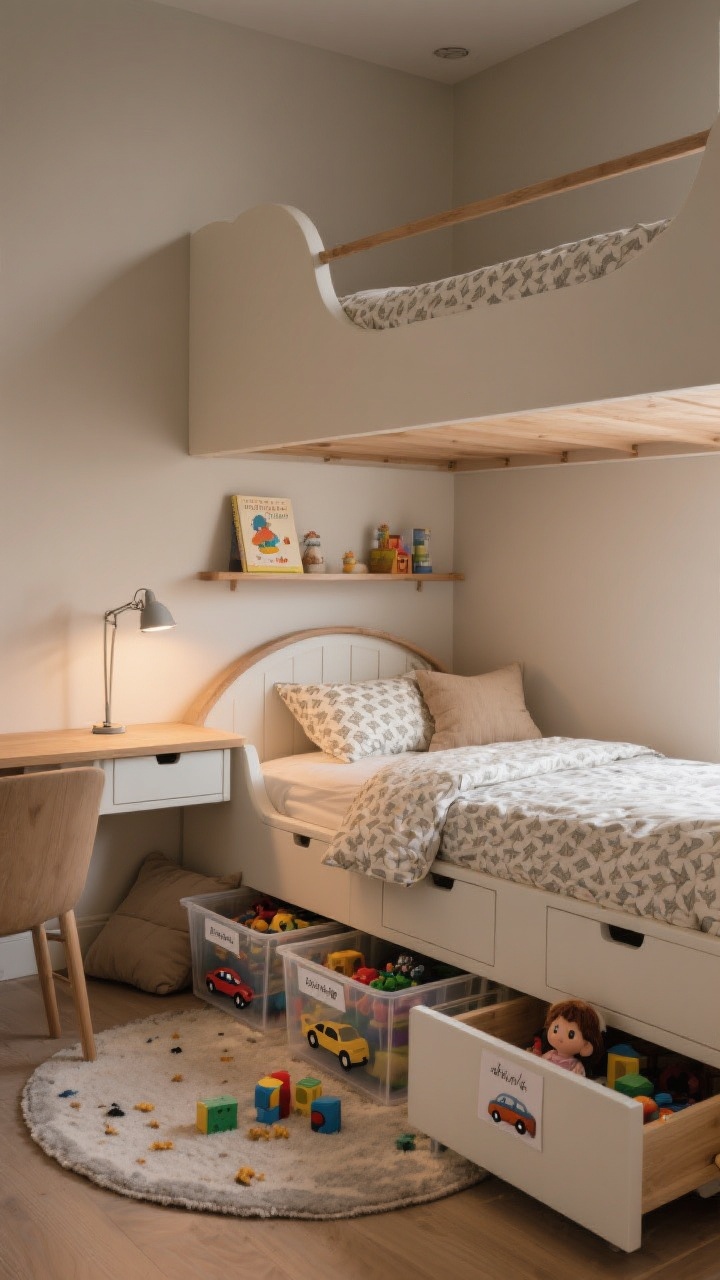
Think of the bed as your secret storage weapon. A loft bed makes room for a desk or cozy reading nook underneath, while a captain’s bed with drawers hides toys that multiply overnight—like gremlins, but plastic.
Smart Bed Upgrades
- Under-bed bins with labels (use icons for non-readers).
- Trundle bed for sleepovers—no inflatable mattress drama.
- Clip-on lamps and shelves so bedtime books aren’t booby traps.
Stick to rounded edges and a neutral frame. You can swap bedding as their personality changes every six months. FYI: a patterned duvet hides snack crumbs. You’re welcome.
2. Zone the Room Like a Tiny Studio
Even in small spaces, zones keep things calm. Create mini “destinations” for sleep, play, reading, and getting ready so toys don’t flood the bed—or your soul.
Easy Zoning Tricks
- Rugs define areas—shag for reading nook, flat-weave for LEGO land.
- Low shelving near play space; hooks and mirror by closet/dresser.
- Lighting layers: nightlight for bed, task lamp for desk, soft lamp for reading.
Keep traffic flow open—no obstacle courses to the door. It’s a kid’s room, not a maze challenge.
3. Choose Colors That Grow Up Nicely
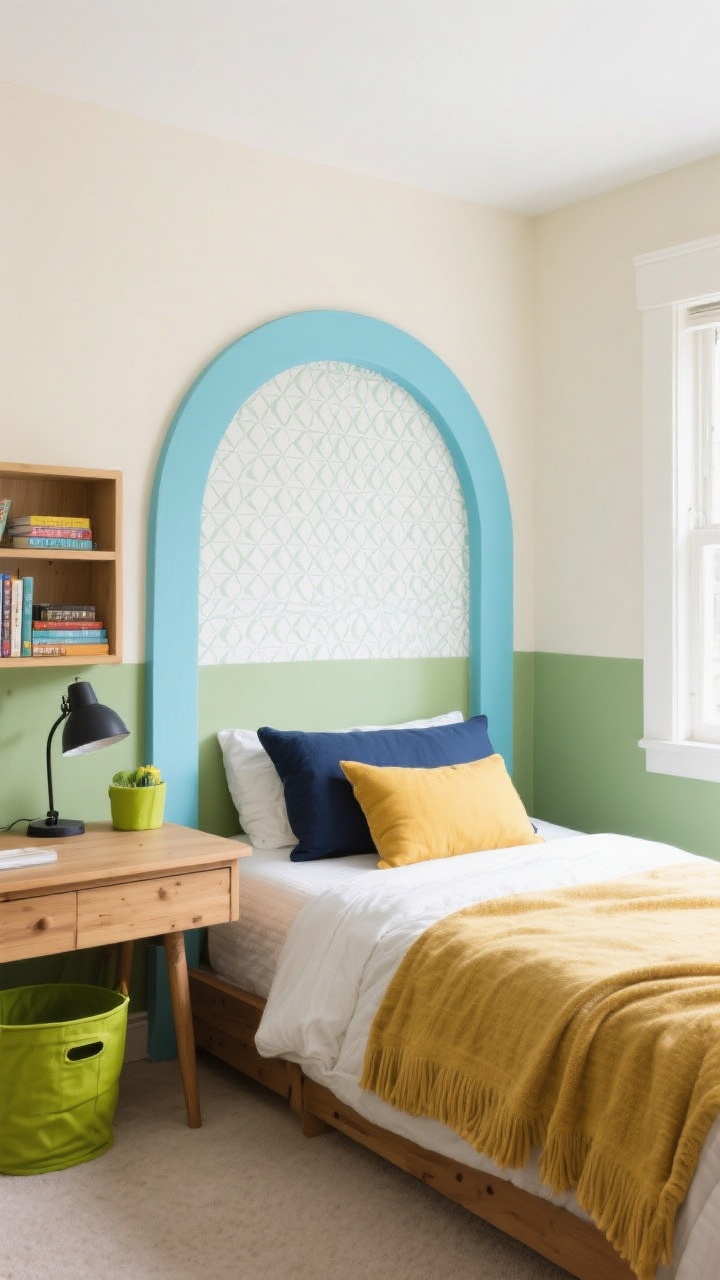
Yes to color! But do it smart so you aren’t repainting every birthday. Start with a soft, neutral backdrop, then punch it up with bold accents your kid can swap when the dinosaur phase becomes the astronaut era.
Color Combinations That Work
- Sage + Navy + Mustard (calm but playful)
- Blush + Terracotta + Cream (warm and modern)
- Ice Blue + Charcoal + Lime (fresh and energetic)
Try a two-tone wall or painted arch over the bed—instant focal point, minimal effort. And if you fear commitment, removable wallpaper is your flirty friend.
4. Storage That Kids Actually Use
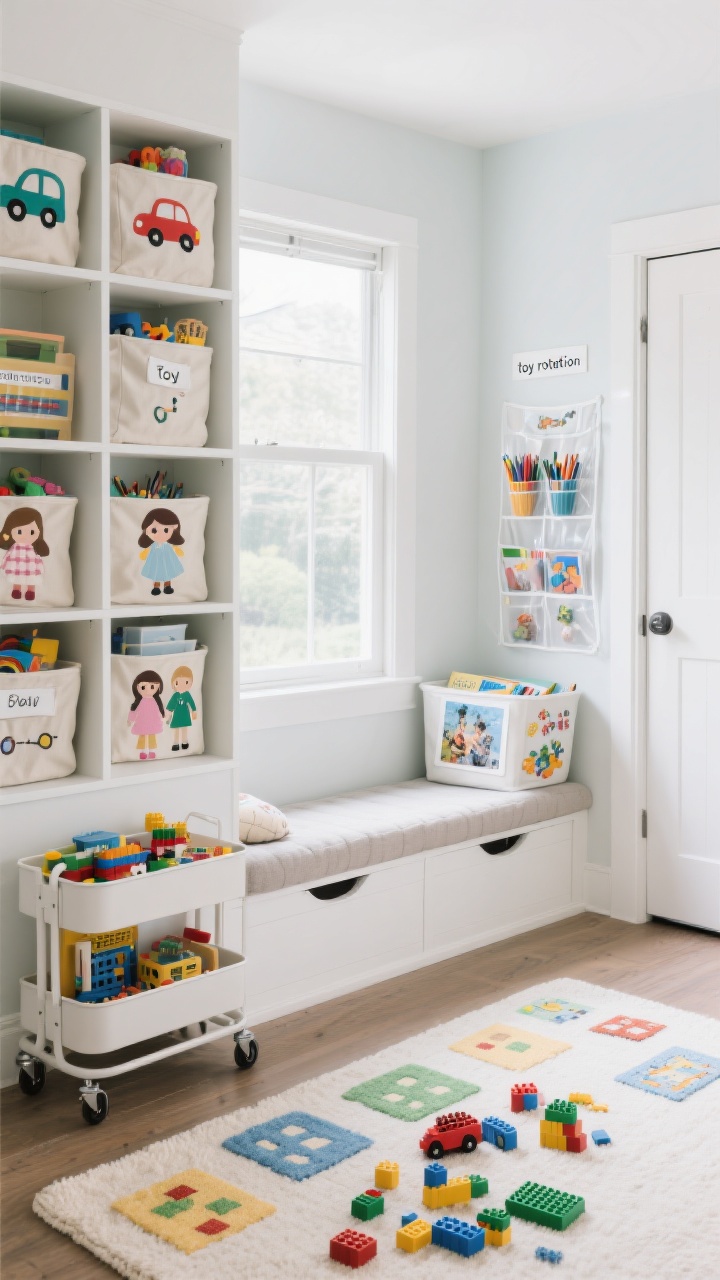
If your storage is too complicated, kids will ignore it. Think big baskets, open shelves, and low drawers. Labels with pictures make clean-up time faster than a sugar rush.
Grab-and-Go Systems
- Cubby shelves with bins: one for cars, one for dolls, one for crafts.
- Over-the-door organizers for art supplies or tiny treasures.
- Rolling carts for LEGOs, magnet tiles, or homework supplies—park it where they play.
- Window seat storage doubles as a reading perch. Cozy and sneaky.
Pro tip: set a toy rotation bin in the closet. Less out = less mess. IMO, it’s the closest thing to magic.
5. Make a Flexible Art + Homework Station
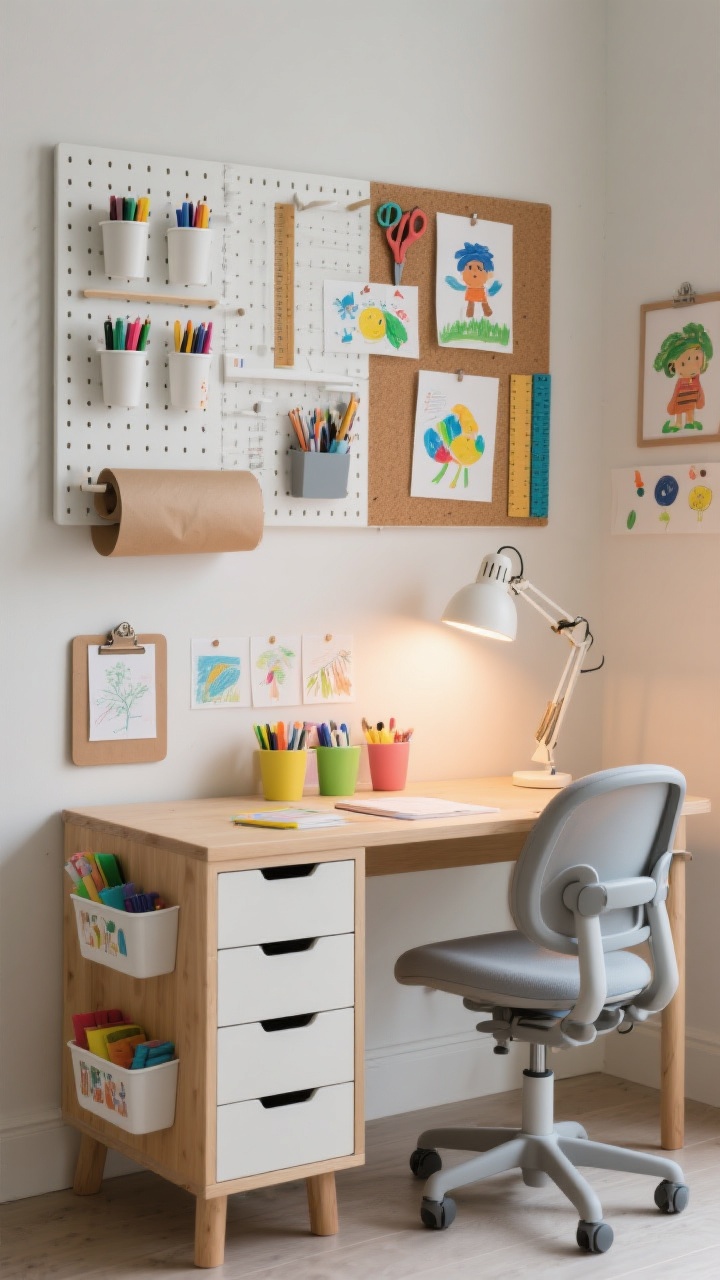
Kids need a spot to draw, build, and occasionally do the math worksheet they “totally forgot.” Keep it simple and adaptable so it works from preschool scribbles to middle school projects.
Desk Setup That Grows With Them
- Adjustable chair and a desk with drawers or add-on bins.
- Wall-mounted organizers: pegboard, magnetic strips, or cork tiles for tools and masterpieces.
- Task lighting with warm LED bulbs to save eyes (and bedtime moods).
Bonus points for a paper roll holder or a clipboard gallery wall. It says “we value your creativity” without taping fifty papers to the fridge.
6. Play With Themes—But Keep Them Loosely Defined
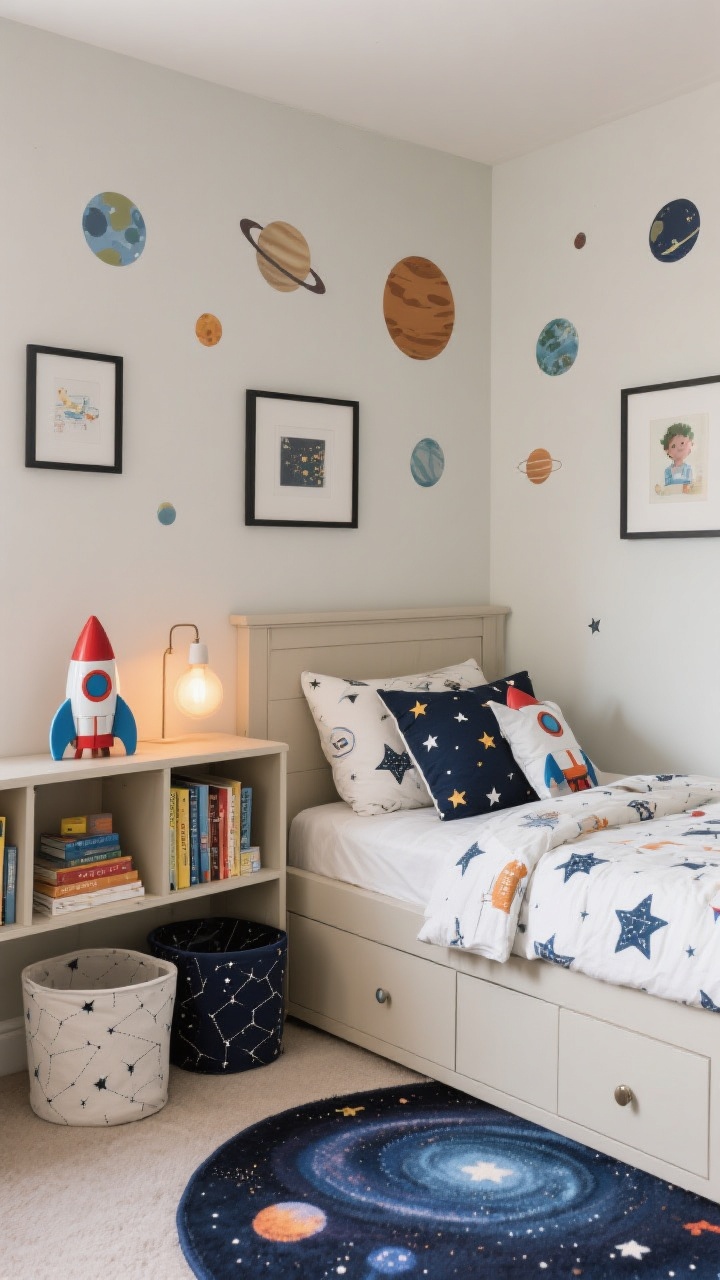
Go ahead and lean into their passion, just don’t make it a museum exhibit. Choose a loose theme like “explorer,” “under the sea,” or “space” and build around it with flexible decor that can evolve.
Theme Without Regret
- Textiles do the heavy lifting: duvet, pillows, curtains, rug.
- Art prints and decals add personality without a paint roller.
- Bins or bookends that nod to the theme (rocket, whale, safari).
Keep big furniture classic. When their taste pivots, swapping a few accessories won’t wreck your weekend—or your wallet, FYI.
7. Create a Cozy Reading Nook They’ll Actually Use
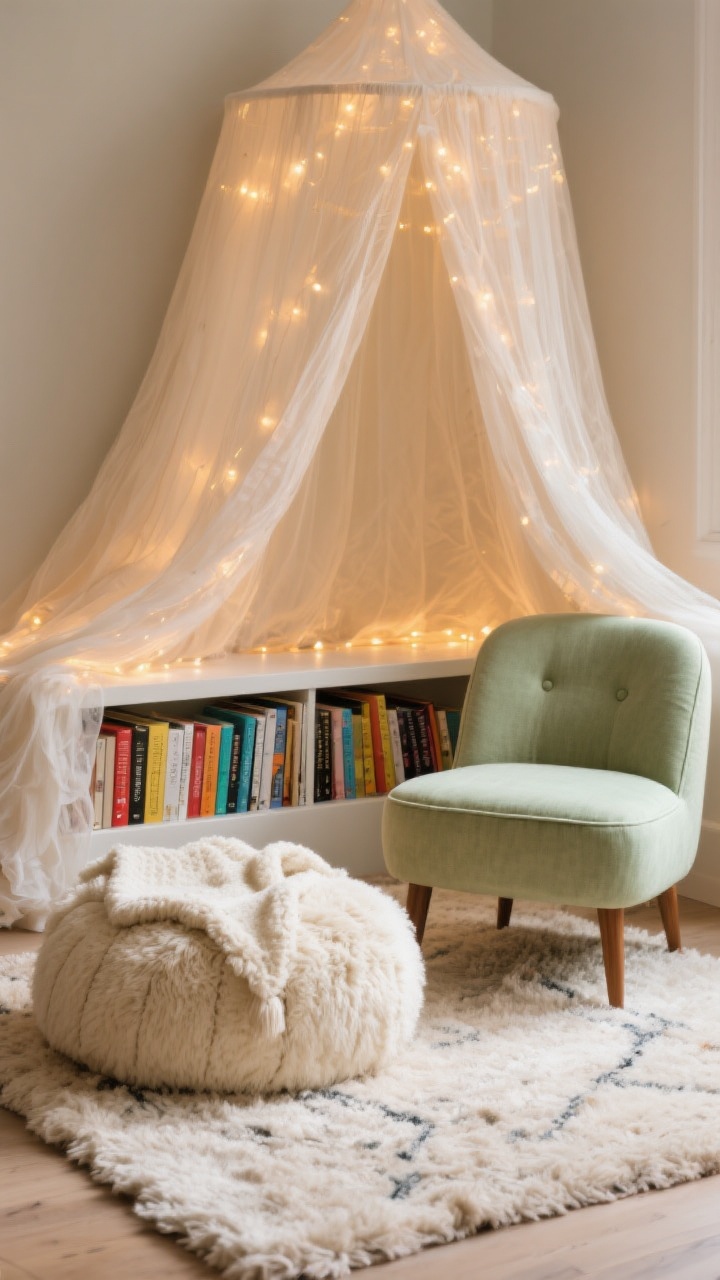
Build a little escape hatch from noise and siblings. A dedicated reading nook invites calm and makes bedtime stories feel special instead of… negotiable.
Nook Essentials
- Soft zone: floor cushion, beanbag, or mini armchair.
- Low bookshelf or front-facing book ledges to display covers.
- Warm light: plug-in sconce, fairy lights, or a small lamp.
- Canopy or tent for instant magic (and a great hide-and-seek spot).
Rotate books by season or theme so the space feels fresh. Sneak in a fuzzy throw—kids are powerless against cozy textures.
8. Use Walls Like a Storage Playground
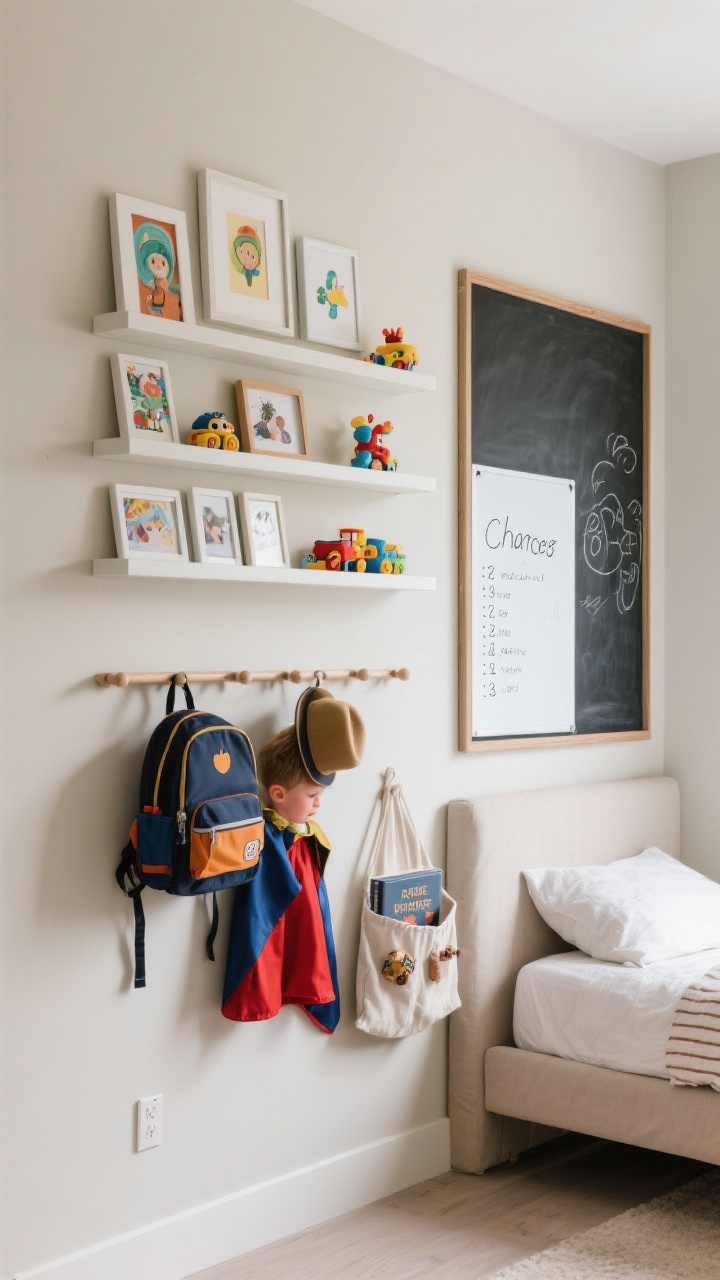
Walls are prime real estate. Go vertical with floating shelves, pegs, rails, and ledges to free floor space and display their current obsessions (which change weekly, of course).
Vertical Wins
- Peg rails for backpacks, costumes, and hats—cute and functional.
- Gallery wall with mix-and-match frames for art and photos.
- Chalkboard or whiteboard section for doodles, chore lists, or schedules.
- Hanging pockets near the bed for books and secret treasures.
Mount things securely and at kid height. Independence is the goal—plus fewer “Moooom, where’s my…” moments.
9. Safety, Durability, And The Stuff You’ll Thank Yourself For
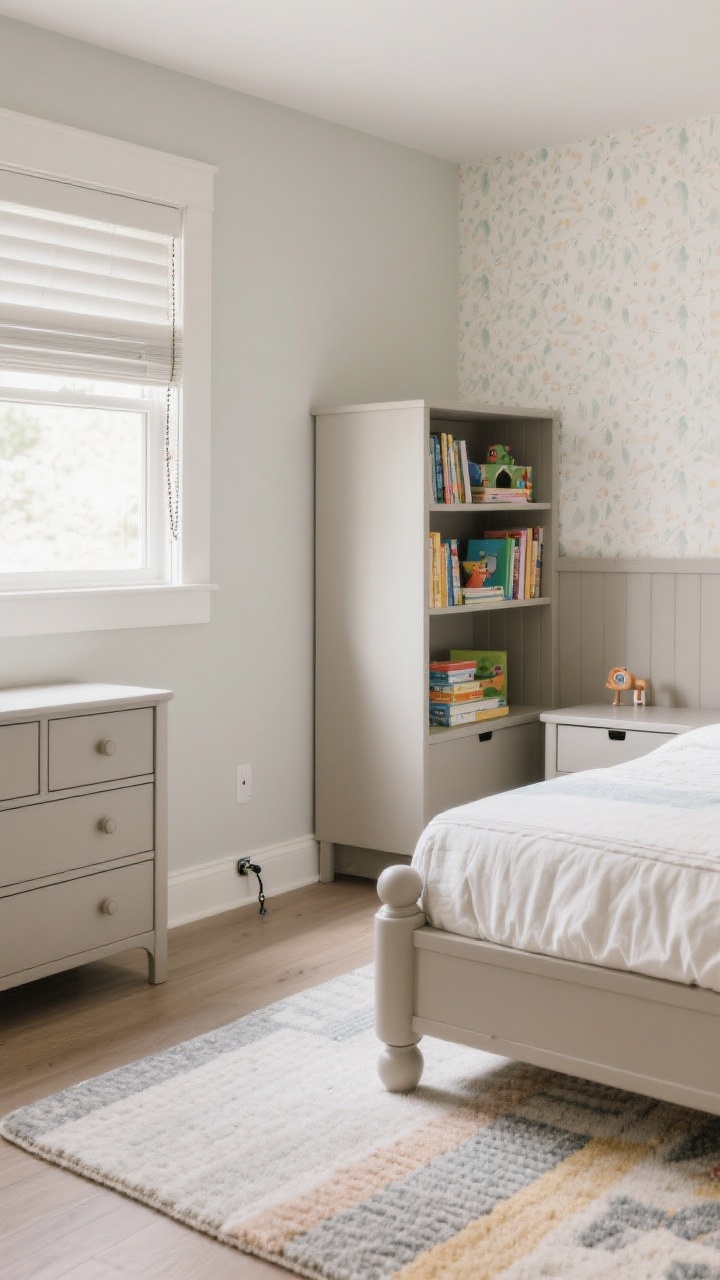
Design is fun. Safety is non-negotiable. Choose durable finishes, secure the heavy stuff, and pick materials that can survive glitter glue and mystery stickiness.
Set-It-And-Forget-It Choices
- Anchored furniture (dressers, bookcases) to prevent tipping.
- Washable paint and removable wallpaper for easy updates.
- Rug pads and rounded corners to minimize owies.
- Machine-washable bedding and rugs because life happens.
- Cord management with clips or covers; choose cordless blinds if possible.
Choose quality over quantity. A few sturdy, beautiful pieces beat a pile of flimsy stuff that falls apart after one epic pillow fort.
You’ve got this. Keep it fun, keep it flexible, and design with your kid—not just for them. The best rooms evolve with their interests, survive the mess, and still make you smile when you crack the door at night. Now go make magic (and maybe label a bin or two).
